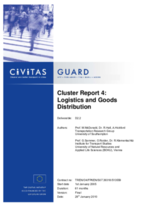Planning of a tram-train: Intermodal infrastructure use
Thematic areas
Collective passenger transport & shared mobility
Summary
The measure focused on planning for the extended use of existing infrastructure in order to provide more convenient transfer-free public transport access to the city centre.
Implementing sustainable mobility
Bremen has the general objective of achieving greater use of environmentally friendly transport modes, both in the city and in the region. The region already enjoyed good transport cooperation in the form of integrated ticketing and information systems within a regional transport association. However, experience showed that the extension of the tram network is an important element in making public transport more attractive to passengers.
VIVALDI surveys of one of the Bremen tram lines showed an increase in public transport use of up to about 40 percent in comparison to the previous (more frequent) bus services.
Progress
More than 16,000 residents of peripheral areas were identified as potentially benefiting from a direct and convenient tram connection to the city, with a time saving of around six minutes per trip. The decision was made to extend the tram line along an existing railway track. This was a cost-effective solution as no new corridor for tram tracks was necessary, there was no need for reallocation of road space, and the tracks could still be used for freight transportation. Many such (underused) tracks have already been closed down in Germany, resulting in more freight on the roads.
Outcomes
The public transport operator BSAG organised successful information meetings for the public, distributing information materials and presenting videos in relation to the future tram lines. These meetings were well attended and had a positive impact.
In general, the shift from bus to light rail in suburban regions is an efficient means of improving the public transport system so that it can better compete with private car usage and contribute to the development of the area. Despite the high investment costs, which are covered mainly by the state and not by the city, a positive effect can be expected in the long run, as patronage increases and the operation of public transport becomes cheaper. In general terms, a tramline extension can be recommended for other cities.








